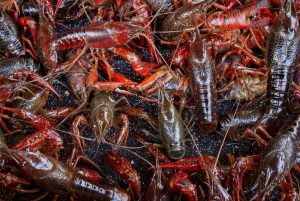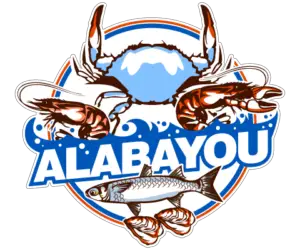I find it fascinating that many people in this country and around the world have never enjoyed the southern delicacy that is crawfish.
Whenever I run across an individual who has never eaten a mud bug they ask, “can you eat that?”.
Can you eat crawfish? Yes, you can eat crawfish. They are a popular food item in many parts of the world, particularly on the Gulf Coast, where they are considered a staple of southern cuisine. Crawfish are a nutritious food source, high in protein, low in fat, and a good source of vitamins and minerals, including B-12 and iron.
If you never had the pleasure of eating crawfish, give our article on what carwfish taste like a read.
Crawfish a Staple of Southern Cusine
Crawfish, also known as crayfish, crawdads, or mudbugs are a popular food item in many parts of the world, particularly in the south, where they are considered a staple of Southern cuisine.
But beyond being delicious, many people have questions about the edibility of crawfish and whether they are safe to eat.

In this blog post, we’ll explore everything you need to know about eating crawfish, from their nutritional value to the best ways to prepare them.
What are Crawfish and Where do They Come From?
Crawfish are small freshwater crustaceans that belong to the same family as lobsters and shrimp.
They are found in streams, rivers, and lakes all over the world, but are most commonly associated with Louisiana, where they are farmed and harvested for consumption.
Crawfish are a nutritious food source, high in protein, low in fat, and a good source of vitamins and minerals, including B-12 and iron.
They have a delicate flavor that is often described as a cross between shrimp and lobster, and are often used in a variety of dishes, from gumbo and jambalaya to etouffee and bisque.

Are Crawfish Safe to Eat?
One of the biggest concerns about eating crawfish is the risk of food poisoning. Crawfish can carry parasites and harmful bacteria, such as Vibrio, which can cause serious illness if not properly cooked.
However, these risks can be mitigated by taking the proper precautions when handling and cooking crawfish. It’s important to always purchase crawfish from a reputable source and to store them properly to prevent the growth of harmful bacteria.
When cooking crawfish, be sure to bring the water to a rolling boil and cook them for at least three minutes, or until the tails turn bright red.
This will ensure that the internal temperature of the crawfish reaches a high enough level to kill any harmful bacteria.
It’s also important to avoid consuming raw or under cooked crawfish, as well as any dishes made with raw or under cooked crawfish, such as cocktail sauce or sushi.
If you experience any symptoms of food poisoning after eating crawfish, such as nausea, vomiting, or diarrhea, seek medical attention immediately.

Preparing and Cooking Crawfish
One of the most popular ways to enjoy crawfish is by boiling them. Boiling crawfish is a simple process that requires only a few ingredients, including water, a boiling pot, and a seasoning blend.
To boil crawfish, simply fill a large pot with water, bring it to a rolling boil, and add the seasonings.
Then, add the live crawfish to the pot, cover it with a lid, and let it boil for three to five minutes, or until the tails turn bright red.
Let the crawfish soak for 30 min then drain and serve with cold beer, corn and potatoes ,and plenty of paper towels for messy hands!
If you would like to learn more about boiling crawfish read our complete guide and you will be impressing all your friends and family with how great your crawfish are.

Another popular way to enjoy crawfish is by using them in a variety of dishes, such as gumbo, jambalaya, etouffee, or bisque.
These dishes typically start with a roux, which is a mixture of flour and fat that is used as a base for sauces and stews.
From there, a variety of ingredients, such as onions, peppers, garlic, and seasonings, are added to create a rich and flavorful dish.
Conclusion

Crawfish are a delicious and nutritious food item that can be enjoyed in a variety of dishes.
With proper handling and cooking, they are safe to eat and offer a delicious flavor that is similar to shrimp and lobster.
Whether boiled, used in stews, or as a main ingredient in a variety of dishes, crawfish are a tasty addition to any meal.
So, next time you’re looking for a new and exciting food item to try, consider adding crawfish to your menu.
“Keeping Tradition”
At Alabayou, we believe that preserving the traditions and heritage of commercial fishing families and communities is of utmost importance.
Commercial fishing is more than just a job; it is a way of life that has been passed down from generation to generation for centuries.
However, with real estate development and over regulations threatening coastal towns and communities across the country, these traditions are at risk of being lost forever.
That’s why Alabayou was created, to help preserve and promote the rich history and cultural significance of commercial fishing.
Our mission is to bring together commercial fishing families, communities, and organizations to share their stories, experiences, and knowledge with others.

Whether you are a commercial fisherman, a passionate seafood enthusiast, or simply someone who appreciates the beauty and importance of our coastal heritage, Alabayou is the place for you.
We offer a variety of resources and information to help support and sustain the commercial fishing industry, including industry news, historical articles, and community events.
At Alabayou, we understand that the commercial fishing industry is facing many challenges, but we believe that by working together and sharing our passion and knowledge, we can help ensure that these traditions and way of life continue for generations to come.
Join us in our mission to preserve and celebrate the commercial fishing heritage of our country. Help support Alabayou today!

